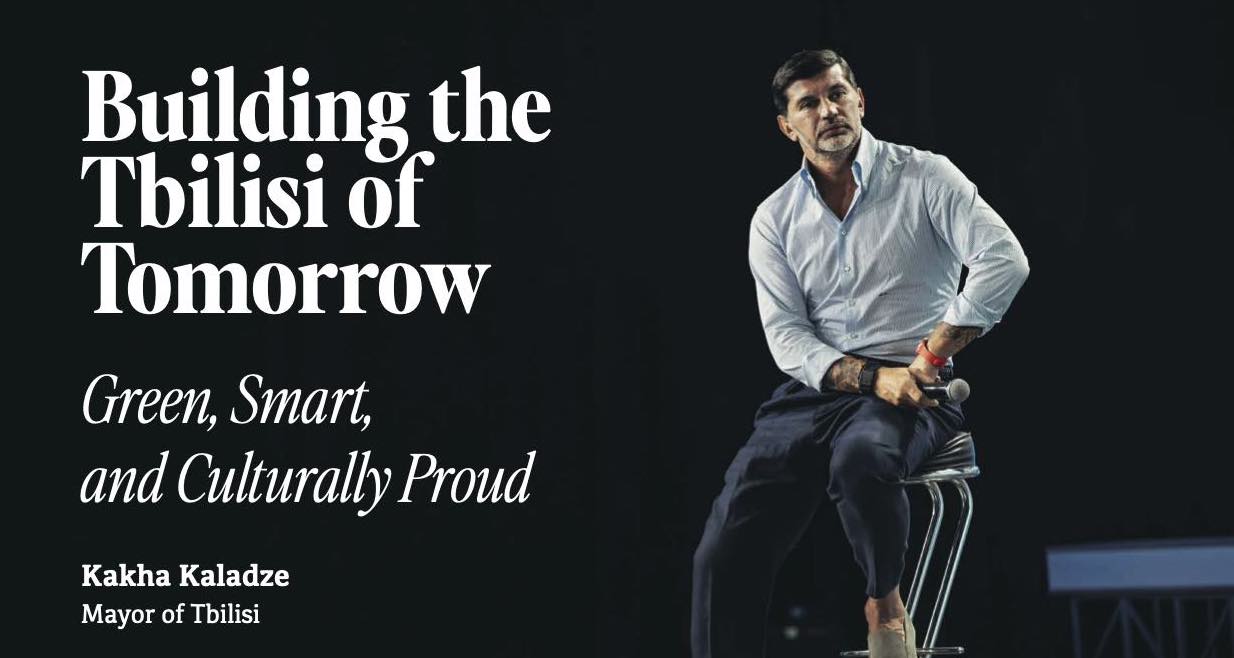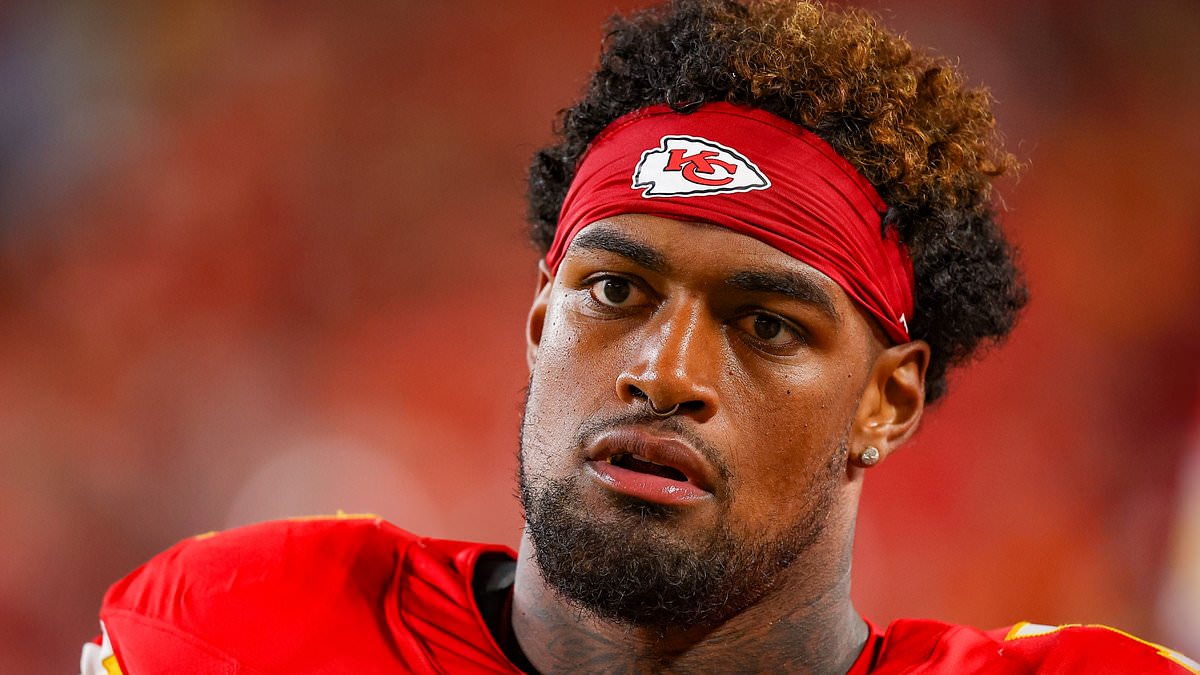Copyright finchannel

What steps are you taking to protect architectural monuments and cultural identity? As you know, Tbilisi is distinguished by a large number of monuments with cultural heritage status, which shape the city’s identity and history. The capital has many historical buildings, most of which, unfortunately, are in a state of disrepair. It is our duty to preserve and maintain them. Since coming into office in 2017, we have set a goal to rehabilitate those buildings that add unique charm to our beautiful capital. Over the past eight years, a number of significant restoration works have been completed — the so-called Cadet Corps, the National Palace of Students and Youth, the Chess Palace and Alpine Club, the Palace of Queen Darejan, the Narikala Fortress, and the State Silk Museum have all been restored. Full rehabilitation has also been carried out in Orbeliani and Gudiashvili squares. Additionally, many individual buildings on various streets have been renewed. The restoration of cultural heritage monuments and their preservation in their original form remains one of our main priorities. Accordingly, we have large-scale plans for the coming years. In particular, a new major project will soon begin — the rehabilitation of Sulkhan-Saba Orbeliani and Ingorokva streets, which will include not only street restoration but also the renovation of buildings located in the area. The Tbilisi Development Fund is working in this direction. I would like to take this opportunity to once again thank its leadership and every employee of the Fund, who work around the clock. I would also like to express my gratitude to the representatives of the construction companies who perform their duties with diligence and treat every detail of historical Tbilisi with care. In addition, we have already announced a new program that will start in 2026, aiming to replace dilapidated buildings in the historical part of Tbilisi. The existence of unsafe buildings in the city’s historic districts is a major challenge — not only in terms of safety but also for the city’s identity, history, and cultural heritage. That is why it was crucial for us to find a correct and long-term solution to this problem, which we have done through the new program that will take effect in 2026. How do you regulate density to prevent overdevelopment and the deterioration of the living environment? To ensure proper urban development, in 2019 we adopted the General Land Use Plan of Tbilisi. Its purpose is to define the city’s spatial and territorial development directions and create balanced development through urban planning solutions that ensure a healthy and safe living environment. The plan’s functional zoning is based on the main priorities and concepts aimed at developing a compact, green, connected, and resilient city. To regulate chaotic and expansive urban growth, planning zones were defined and restrictions introduced — specific regulations now apply to undeveloped areas (such as development boundaries and minimum plot sizes). Alongside this, a detailed action plan has been developed across key sectors — urban planning, transport, economy, landscape, and environmental protection — establishing a coordinated agenda for the relevant municipal departments. What are the main priorities of Tbilisi’s urban development at this stage? The main urban development priorities are defined by the General Land Use Plan, which focuses on creating a green and well- connected city. This includes addressing transport challenges and expanding green spaces. For proper urban development, it is also crucial to prohibit construction in green zones, ensure equal development of built-up areas, reorganize existing territories structurally and functionally instead of expanding into free land, and rehabilitate degraded areas and landscapes. Most importantly, these efforts aim to create a safe environment for human life and health. I have said many times and will repeat — nothing suits our capital better than green spaces, and nothing is more important than promoting a healthy lifestyle. Therefore, alongside recreational areas, the development of sports facilities throughout the city remains a key focus. As in the past eight years, the municipality’s top priorities continue to be the creation and rehabilitation of green spaces, the construction of sports fields and complexes wherever possible, and ensuring our children grow up in a clean, healthy environment — improving the city’s ecology and encouraging a healthier way of life. Which districts of Tbilisi do you consider most promising for investment? Tbilisi’s geographic location allows cultural diversity and business convenience to coexist, increasing the demand for services, innovation, and modern technologies. Creating a favorable investment environment and developing technology infrastructure that enables international companies to operate easily in Georgia will increase the country’s global recognition, attract more investment, and boost employment and development. The municipality is doing everything within its means to encourage investment, support service development, and increase tourist inflows. Given the city’s rich cultural and historical heritage, investor interest naturally focuses on areas with diverse and attractive surroundings. However, in recent years, we have also been actively working to develop all districts of the city to generate more investor interest and stimulate the implementation of significant projects — including hotels, innovation hubs, and various digital initiatives. Is it possible that water transport on the Mtkvari (Kura) River will be developed in the future? We have already conducted a study on the potential for river transport on the Mtkvari. We continue to observe the need for such development, and as riverside districts evolve, implementing projects of this type may become necessary — at which point we will act accordingly. How do you plan to overcome unequal development between the city center and the suburbs? Bridging the development gap between the center and the suburbs requires an integrated urban policy addressing infrastructural, social, and economic aspects. To ensure balanced growth, we are pursuing a polycentric development model. Polycentric development enhances inclusivity, equal access to urban resources, reduces traffic congestion, and improves environmental conditions. The General Plan identifies several urban sub- centers, and balanced territorial development is part of the “Well-Connected City” concept. Achieving this goal depends on creating transport connections that allow residents to travel comfortably and efficiently between all parts of the city. Many steps have already been taken in this direction and will continue. Importantly, every project we implement follows the same principle — whether in the city center or periphery, we make fundamental improvements, not superficial ones. Parks, roads, and historical building restorations are being carried out to equally high standards citywide. We are gradually entering every district, creating parks, green spaces, sports complexes, playgrounds, and kindergartens, while rehabilitating existing facilities and reclaiming privatized land. I can confidently say our work covers the entire city, not just central neighbourhoods. Tbilisi promotes the “Green City” concept. In which areas are new large parks planned? One of our main priorities is to create as many green spaces as possible. In recent years, we have already made significant progress — rehabilitating and constructing numerous parks and squares, while removing hundreds of outdated garages to create recreational spaces for residents. In the coming years, large-scale green projects are planned across all districts. Wherever space allows, parks, squares, and sports fields will be established. Although some areas remain under private ownership, we continue negotiations to return these lands to the municipality and convert them into public green spaces to enhance residents’ quality of life. How realistic is it for Tbilisi to allow only electric vehicles in the future? The import of electric vehicles in Georgia has increased significantly in recent years, encouraged by government policy — customs duties on EVs are set at zero. The municipality supports this national initiative, aiming to reduce air pollution and expand the use of electric vehicles in the capital. Since taking office, we have designated free parking areas for EV owners and installed free public charging stations. In the near future, we plan to add around 200 fast-charging stations citywide, making EV use even more convenient. With ongoing reforms and infrastructure improvements, we expect more residents — like in other European cities — to favor public and eco-friendly transport such as bicycles, and to choose electric vehicles over conventional cars. The municipality will continue to promote such initiatives. What is the progress on riverfront spaces, green corridors, and urban forests? Tbilisi City Hall is actively working to preserve and restore urban forests. Over the past eight years, significant attention has been paid to urban greenery. With funding from the Cartu Foundation, we are rehabilitating about 700 hectares of forest on Mtatsminda slopes. Our goal is to make the Mtatsminda landscape vibrant year-round through the replanting of evergreen and deciduous trees, shrubs, and grass cover. I wish to express deep gratitude to Bidzina Ivanishvili, Honorary Chairman of Georgian Dream, and his family for their support. Additionally, rehabilitation work is underway on Khudadov Forest-Park, a historic recreational space vital for Tbilisi’s ecosystem. We plan to continue developing this park due to its great potential. We have also repurchased part of Dighomi Forest-Park from private ownership and are negotiating to acquire it fully for restoration. Likewise, we aim to return Mushtaidi Garden to the municipality and restore it comprehensively. Over the next four years, many green projects are planned — including the establishment of a local forest management body overseeing 12,000 hectares, rehabilitation of up to 200 hectares of recreational space, and restoration of Rike Park, Avchala Park, Kakhidze Square, and Artos Garden. Tbilisi has the potential to become one of Europe’s greenest cities — and I am confident it will, filled with life, beauty, and greenery. Smart City technologies are a global trend. What key initiatives are underway or planned in Tbilisi? A major “Smart Traffic Lights” project is underway to intelligently manage city traffic through AI-based software. Once completed, traffic congestion is expected to decrease by about 20%. Mobility will improve for emergency services and pedestrians, while safety and traffic organization will increase. As part of the project, the city’s Traffic Control Center will be fully modernized, outdated hardware replaced, and all systems integrated into a unified network. Emergency and fire- rescue services will be connected to ensure priority signal control, and public transport systems will be integrated for smoother operations. AI-based detectors will enable the system to make real-time traffic decisions, and pilot pedestrian detection systems will optimize crossing times according to foot traffic. What energy-efficiency initiatives are planned, such as powering municipal buildings with solar energy? All new and ongoing projects pay special attention to energy efficiency — particularly the installation of LED streetlights that save 60–70% of electricity costs while enhancing the urban design. The municipality will continue to support such energy-efficient initiatives moving forward. How do you envision Tbilisi in 10 years in terms of urban identity and global competitiveness? In the past eight years, we have launched many transformative projects that will have a long-term positive impact. Following successful reforms, the residents of Tbilisi have once again entrusted us with developing the city for the next four years. All ongoing initiatives will continue, along with new ambitious projects — such as the creation of a large amusement park that will serve both locals and tourists. The restoration of historic areas and improvement of tourist infrastructure will also continue, along with the creation of new recreational zones that will make the city greener and healthier. More focus will be given to pedestrian infrastructure and the development of cable car systems to support tourism and eco-friendly mobility. Our goal is to leave behind a well-organized, greener, and cleaner city for future generations — and our work toward that vision will only expand. As Tbilisi grows as a regional tourism hub, what infrastructure improvements are being made for visitors and residents — for example, in transport, signage, accessibility, and public services? The development of the public transport network — metro and buses, including the introduction of 18-meter buses — aims to connect all city districts. Ongoing projects focus on increasing pedestrian access to metro stations and constructing new ones, improving accessibility for both residents and visitors to major attractions. We have also launched a new initiative to create dedicated parking zones for tourist buses and tour operators across the city, particularly in tourist-heavy areas — something that did not exist before. Accessibility remains a challenge in many parts of Tbilisi for people with disabilities, the elderly, or parents with children. What measures are being taken? For several years now, roads have been designed under the principle of multimodal planning — ensuring safe and inclusive movement for all participants, including pedestrians, people with disabilities, cyclists, drivers, and public transport passengers. Sidewalks are equipped with tactile tiles and ramps, while sound- enabled traffic lights are being installed to improve safety for the visually impaired. What would you say to international tourists — why should they visit Tbilisi? What advantages would you highlight? The number of tourists visiting Georgia increases every year. In the first three quarters of 2025, the country recorded a historic high — 4.3 million tourist visits and 6.1 million total international trips. This growth boosts our economy, development, and employment, stimulating small and medium-sized businesses, hotel openings, cafés, and new opportunities for residents. As our city’s infrastructure improves and beautifies, we must also actively promote Georgia globally — through hosting international cultural and sports events and inviting travel media, bloggers, and tourism associations to experience and share Tbilisi’s rich offerings, including its culture, architecture, and hospitality. We want Tbilisi and Georgia to be seen as a safe, exciting adventure destination — a place of deep culture and heritage. Visitors can also enjoy our traditional cuisine, strengthening Tbilisi’s position as a leading culinary tourism hub in the region. The Tbilisi City Hall will continue to support all projects that showcase our city’s beauty, culture, and traditions to the world — encouraging more international visitors, strengthening the economy, and creating more prosperity for our people.



